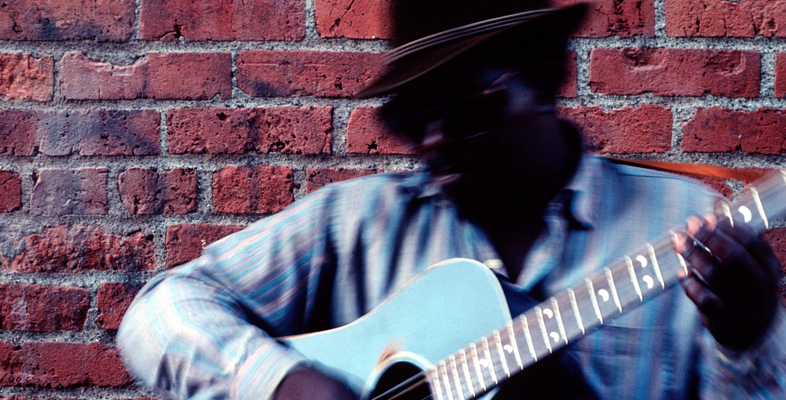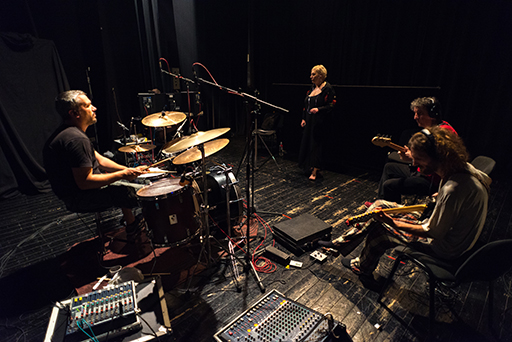8 Blues and the early history of the recording industry
In many ways, what we know about the sound of early blues is influenced by the recordings that have come down to us. Earlier in this course, you heard an extract from an early recording of Robert Petway. Recordings such as this have given us access to music that was passed down by one musician to another by listening and learning by ear. This kind of tradition is known as an oral or aural tradition (oral meaning by mouth and aural by ear) as it was not written down using any kind of musical notation.
Box 2 Oral traditions
Oral musical traditions that are closely related to a single community affirm a sense of group identity and cultural unity. These traditions are sometimes called ‘folk music’. The blues were a unique form of expression in economically depressed and socially marginalised black American communities and so could be called an African-American folk music.
Before access to recordings, songs were often learned in an informal way, one musician listening and copying another, or by working together in community gatherings. In the process of musicians interacting with each other, songs evolved. Lyrics might be adjusted to fit a new situation, melodies might be embellished and changed to suit a singer’s personal vocal style or to fit new words. Playing techniques - whether the guitar or harmonica – were copied and adapted. These were not ‘cover’ versions as we understand them today, but complete reworkings of songs, perhaps only keeping some element of the lyrics or the tune, just as Muddy Waters did with ‘Catfish blues’. This is not to say that blues songs were never written down. There was in fact a significant amount of music printed from around 1910 and the relationship between what was recorded, what was written down and published and what was performed is a complex one. Recording enabled blues singers to reach a wider audience than their immediate community or audiences at live gigs. Once a song had been recorded it could become the source for material for other musicians and bands to copy or appropriate for their own use. Oral traditions and recording therefore have a complicated relationship with respect to the development of blues. The mix of the new mass media of recording and the aurality of traditional communities of blues musicians ensured rapid and widespread dissemination of songs.

